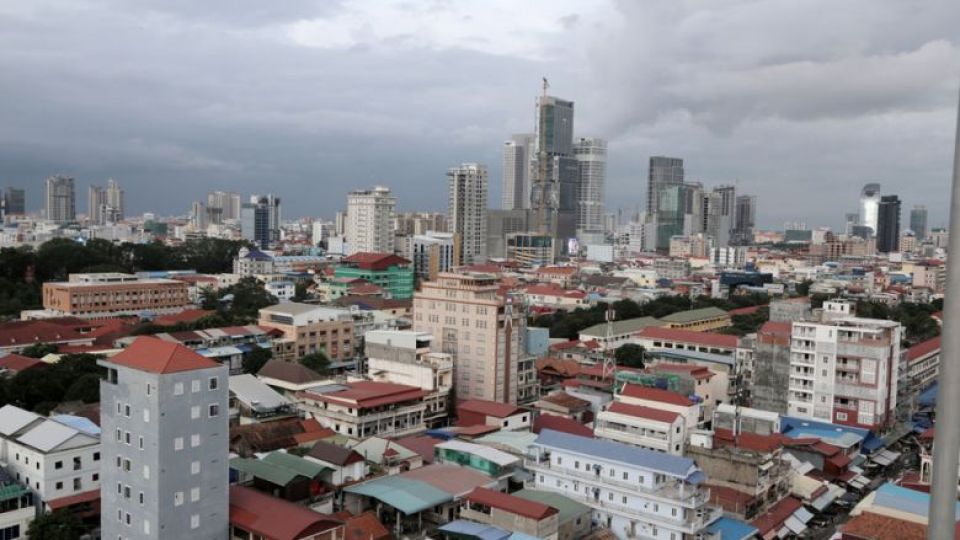September 23, 2022
PHNOM PENH – Two major multilateral lenders have forecast Cambodia’s economic growth for 2022 at around five per cent, buoyed by bumper export performance earlier in the year, coupled with ongoing policy support and continued tourism recovery, but held back by external pressures associated with Covid-19 and the Ukraine conflict.
The Washington-based International Monetary Fund (IMF) downgraded its 2022 growth forecast for the Kingdom’s real gross domestic product (GDP) to five per cent, from 5.1 per cent in late April, as well as the 2023 estimate to nearly 5.5 per cent, from over six per cent earlier in the year.
Meanwhile, the Metro Manila-headquartered Asian Development Bank (ADB) on September 21 maintained its 2022 economic growth forecast for Cambodia at 5.3 per cent, but lowered the 2023 outlook to 6.2 per cent from 6.5 per cent due to weaker global growth.
Alasdair Scott, the IMF’s mission chief for Cambodia, led a team from September 7-20 to conduct the 2022 Article IV consultation for the Kingdom. The mission assessed macroeconomic development and held policy discussions with ministers and senior officials of the Royal Government of Cambodia and met a wide range of stakeholders.
At a virtual press briefing on September 20, Scott said: “The Cambodian economy has been recovering, but faces new challenges. GDP growth rebounded in the second half of 2021, driven mainly by exports of goods.
“But this year, the economy has been buffeted by developments in China, the slowdown in consumer demand in advanced countries – the US and Europe are significant markets for Cambodian manufacturers – and tighter global financial conditions, mainly via external demand, but also funding costs for some financial institutions.
“Inflation hit 7.8 per cent year-on-year in June 2022, following significant increases in fuel and fertiliser costs, although it receded to 4.9 per cent in August. Export orders for the second half of the year have weakened, and the real estate market is slowing.
“The authorities have largely continued with crisis policy responses, such as loans and guarantees, tax breaks, wage subsidies and retraining, and cash transfers – while withdrawing some Covid-19-related spending as the health situation improves.
“The National Bank of Cambodia [NBC] has maintained reserve requirements and the level of the capital conservation buffer, but has ended forbearance on restructurings from July this year.
“Despite the new pressures, the recovery is projected to continue [into 2023] … supported by the continued recovery of tourism and ongoing policy support, although dampened by external pressures and the impact of rising prices on real disposal income.
“Inflation is expected to peak this year, be lower in 2023, and decline further thereafter, assuming it remains mostly confined to imported goods,” he said.
ADB country director for Cambodia Jyotsana Varma added: “An increase in Cambodia’s manufactured product exports and a gradual recovery in the construction and service sectors have supported economic growth in 2022 despite the drop in agricultural growth caused by surging fuel and fertiliser prices, and heavy rains.
“The government’s socio-economic interventions, such as the Cash Transfer Programme for Poor and Vulnerable Households, have been effective in lessening the impacts of the global surges in commodity prices on the poor,” she said.
The ADB revised Cambodia’s 2022 inflation forecast up to 5.0 per cent, from 4.7 per cent in April, citing the strong pass-through effects of fuel price rises tied to the Ukraine conflict. However, the lender kept its 2023 estimate at 2.2 per cent.
“Risks to the outlook include the potential emergence of new and more deadly Covid-19 variants, the monkey pox outbreak, a rapid increase in non-performing loans, the weakened growth of major trading partners, global supply chain disruptions, and a worse-than-expected surge in energy and commodity prices,” it added.
The IMF’s Scott stressed: “Uncertainty around the outlook is particularly high, and risks are tilted to the downside. The most pressing risks are from rising private debt, conditions in key large economies, and inflation.
“The level of private debt is very high, raising concerns about the drag on the economy if borrowers struggle to meet repayments. Credit growth has outstripped growth in nominal GDP for several consecutive years,” he said.


